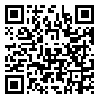Volume 76, Issue 7 (October 2018)
Tehran Univ Med J 2018, 76(7): 503-508 |
Back to browse issues page
Download citation:
BibTeX | RIS | EndNote | Medlars | ProCite | Reference Manager | RefWorks
Send citation to:



BibTeX | RIS | EndNote | Medlars | ProCite | Reference Manager | RefWorks
Send citation to:
Ghayoumi Zadeh H, Danaeian M, Fayazi A, Ahmadi Toussi C, Ahmadinejad N, Navid M. Following a patient with breast cysts using thermal imaging: case report. Tehran Univ Med J 2018; 76 (7) :503-508
URL: http://tumj.tums.ac.ir/article-1-9119-en.html
URL: http://tumj.tums.ac.ir/article-1-9119-en.html
Hossein Ghayoumi Zadeh * 
 1, Mostafa Danaeian2
1, Mostafa Danaeian2 
 , Ali Fayazi2
, Ali Fayazi2 
 , Cyrus Ahmadi Toussi3
, Cyrus Ahmadi Toussi3 
 , Nasrin Ahmadinejad4
, Nasrin Ahmadinejad4 
 , Mitra Navid5
, Mitra Navid5 


 1, Mostafa Danaeian2
1, Mostafa Danaeian2 
 , Ali Fayazi2
, Ali Fayazi2 
 , Cyrus Ahmadi Toussi3
, Cyrus Ahmadi Toussi3 
 , Nasrin Ahmadinejad4
, Nasrin Ahmadinejad4 
 , Mitra Navid5
, Mitra Navid5 

1- Department of Electrical Engineering, Vali-e-Asr University of Rafsanjan, Rafsanjan, Iran. , h.ghayoumizadeh@vru.ac.ir
2- Department of Electrical Engineering, Vali-e-Asr University of Rafsanjan, Rafsanjan, Iran.
3- Department of Biomedical Engineering, Hakim Sabzevari University, Sabzevar, Iran.
4- New and Invasive Radiology Research Center, Tehran University of Medical Sciences, Tehran, Iran.
5- Department of Biomedical Engineering, Fanavaran Madoon Ghermez Company, Tehran, Iran.
2- Department of Electrical Engineering, Vali-e-Asr University of Rafsanjan, Rafsanjan, Iran.
3- Department of Biomedical Engineering, Hakim Sabzevari University, Sabzevar, Iran.
4- New and Invasive Radiology Research Center, Tehran University of Medical Sciences, Tehran, Iran.
5- Department of Biomedical Engineering, Fanavaran Madoon Ghermez Company, Tehran, Iran.
Abstract: (12233 Views)
Background: Breast cancer is a common malignancy in which early breast cancer detection by the help of imaging can improve the treatment outcome. Thermography utilizes infrared beams which are fast, non-invasive, and non-contact and the output created images by this technique are flexible and useful to monitor the temperature of the human body.
Case presentation: Our patient is a 25-year-old woman who was referred to Tehran's Imam Khomeini Hospital, Tehran University of Medical Sciences, in October 2014 and June 2017 to perform clinical examinations of breast cancer at the Invasive and New Radiology Research Center of Tehran. The results of the sonography for the left breast and bilateral axillary regions and sonography guided biopsy from the left axillary region indicated that: it was consistent with the tangential prominence at 11-12 O’ clock in the left breast tissue and echo gene was found without any suspected findings. Then, using the non-contact infrared imaging camera VisIR 640 (Thermoteknix Systems Ltd, Cambridge, UK), the feasibility of thermography method in the patient's follow-up was investigated.
Conclusion: Thermography can be used to detect abnormal areas in the breast tissue that may have cystic origin. The results indicated that the accuracy of the identification and matching of patient cysts in mammography and ultrasonography with the results of thermography in both periods of October 2014 and June 2017. Considering the results, it is noteworthy that the diagnostic clock of the breast cysts in the patient is consistent with the results of the clinical trials with the thermography. Moreover, in a 2 years intervals, the status of thermal morphology status of the cystic region did not considerably change which showed a relatively stable status.
Case presentation: Our patient is a 25-year-old woman who was referred to Tehran's Imam Khomeini Hospital, Tehran University of Medical Sciences, in October 2014 and June 2017 to perform clinical examinations of breast cancer at the Invasive and New Radiology Research Center of Tehran. The results of the sonography for the left breast and bilateral axillary regions and sonography guided biopsy from the left axillary region indicated that: it was consistent with the tangential prominence at 11-12 O’ clock in the left breast tissue and echo gene was found without any suspected findings. Then, using the non-contact infrared imaging camera VisIR 640 (Thermoteknix Systems Ltd, Cambridge, UK), the feasibility of thermography method in the patient's follow-up was investigated.
Conclusion: Thermography can be used to detect abnormal areas in the breast tissue that may have cystic origin. The results indicated that the accuracy of the identification and matching of patient cysts in mammography and ultrasonography with the results of thermography in both periods of October 2014 and June 2017. Considering the results, it is noteworthy that the diagnostic clock of the breast cysts in the patient is consistent with the results of the clinical trials with the thermography. Moreover, in a 2 years intervals, the status of thermal morphology status of the cystic region did not considerably change which showed a relatively stable status.
Type of Study: Case Report |
Send email to the article author
| Rights and permissions | |
 |
This work is licensed under a Creative Commons Attribution-NonCommercial 4.0 International License. |



